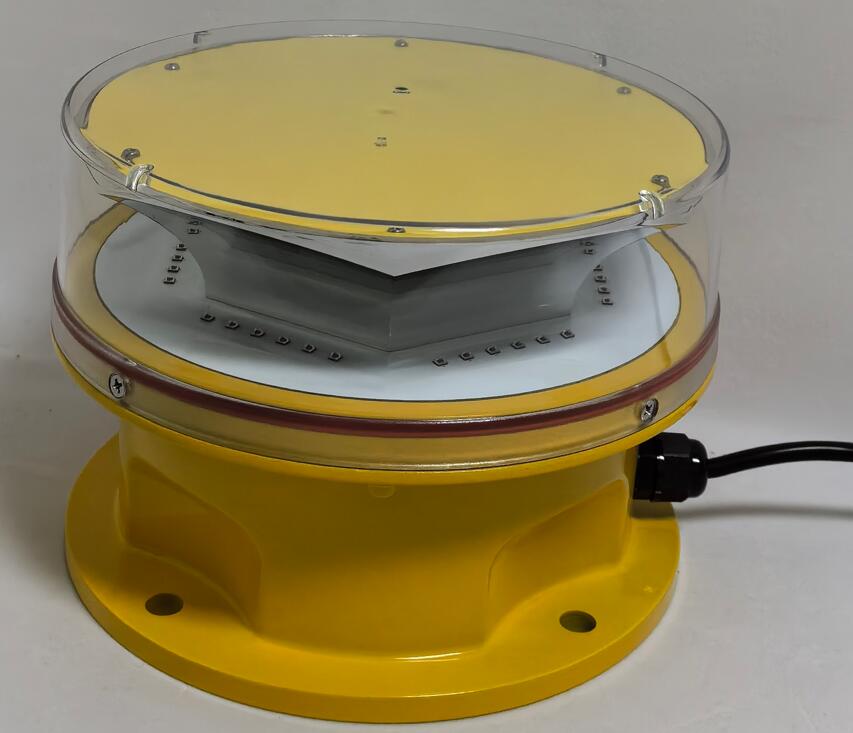When you gaze at the night sky, you might notice tiny, blinking lights on tall structures like skyscrapers, communication towers, or wind turbines. These are not just decorative; they serve a critical purpose. Known as aircraft warning lights, these devices play a vital role in ensuring the safety of both aircraft and ground structures. In this article, we’ll explore the purpose of aircraft warning lights, their importance in aviation, and how they contribute to safer skies.
What Are Aircraft Warning Lights?
Aircraft warning lights are high-intensity lighting systems installed on tall structures to make them visible to pilots, especially during nighttime or low-visibility conditions. These lights are designed to prevent collisions between aircraft and obstacles, ensuring safe navigation through airspace. They are typically red or white and flash in specific patterns to alert pilots of potential hazards.
The Purpose of Aircraft Warning Lights
The primary purpose of aircraft warning lights is to enhance aviation safety. Here’s how they achieve this:

Preventing Collisions: Tall structures like towers, bridges, and buildings can pose significant risks to low-flying aircraft. Warning lights make these structures visible from a distance, giving pilots ample time to adjust their flight path.
Compliance with Regulations: Aviation authorities worldwide mandate the use of aircraft warning lights on structures exceeding certain heights. These regulations ensure uniformity and consistency in marking obstacles, reducing the risk of accidents.
Enhancing Visibility in Poor Conditions: During fog, rain, or darkness, visibility can be severely limited. Aircraft warning lights provide a reliable visual reference for pilots, helping them navigate safely.
Aircraft Warning Lights
|
Aircraft Warning Light
|
Protecting Infrastructure: By preventing collisions, these lights also safeguard the structures they are mounted on. A collision could not only endanger lives but also cause significant damage to property.
Types of Aircraft Warning Lights
There are several types of aircraft warning lights, each suited for different applications:
Red Obstruction Lights: These are commonly used on structures lower than 200 feet. They emit a steady or flashing red light and are ideal for urban areas.
White Strobe Lights: Typically used on taller structures, these lights produce high-intensity flashes visible from great distances. They are often used in rural or remote areas.
Dual Lighting Systems: Some structures use a combination of red and white lights to maximize visibility under various conditions.
Technological Advancements in Aircraft Warning Lights
Modern aircraft warning lights are more efficient and reliable than ever before. Innovations such as LED technology have revolutionized the industry. LED lights consume less energy, have a longer lifespan, and provide brighter illumination compared to traditional incandescent bulbs. Additionally, smart lighting systems equipped with sensors can adjust brightness based on ambient light conditions, further enhancing their effectiveness.
The Global Impact of Aircraft Warning Lights
The purpose of aircraft warning lights extends beyond individual structures. They contribute to the overall safety of global air travel. With the increasing number of tall structures worldwide, the demand for effective warning systems has never been higher. From urban skyscrapers to offshore wind farms, these lights ensure that airspace remains safe and navigable.
In summary, the purpose of aircraft warning lights is to safeguard lives, protect infrastructure, and ensure compliance with aviation regulations. These unassuming yet crucial devices are a testament to how technology can enhance safety in our increasingly complex world. As aviation continues to evolve, so too will the systems that keep it safe, with aircraft warning lights remaining an indispensable part of the equation.
Whether you’re a pilot, an engineer, or simply someone who appreciates the marvels of modern technology, it’s clear that aircraft warning lights are more than just lights—they are beacons of safety in the sky.

